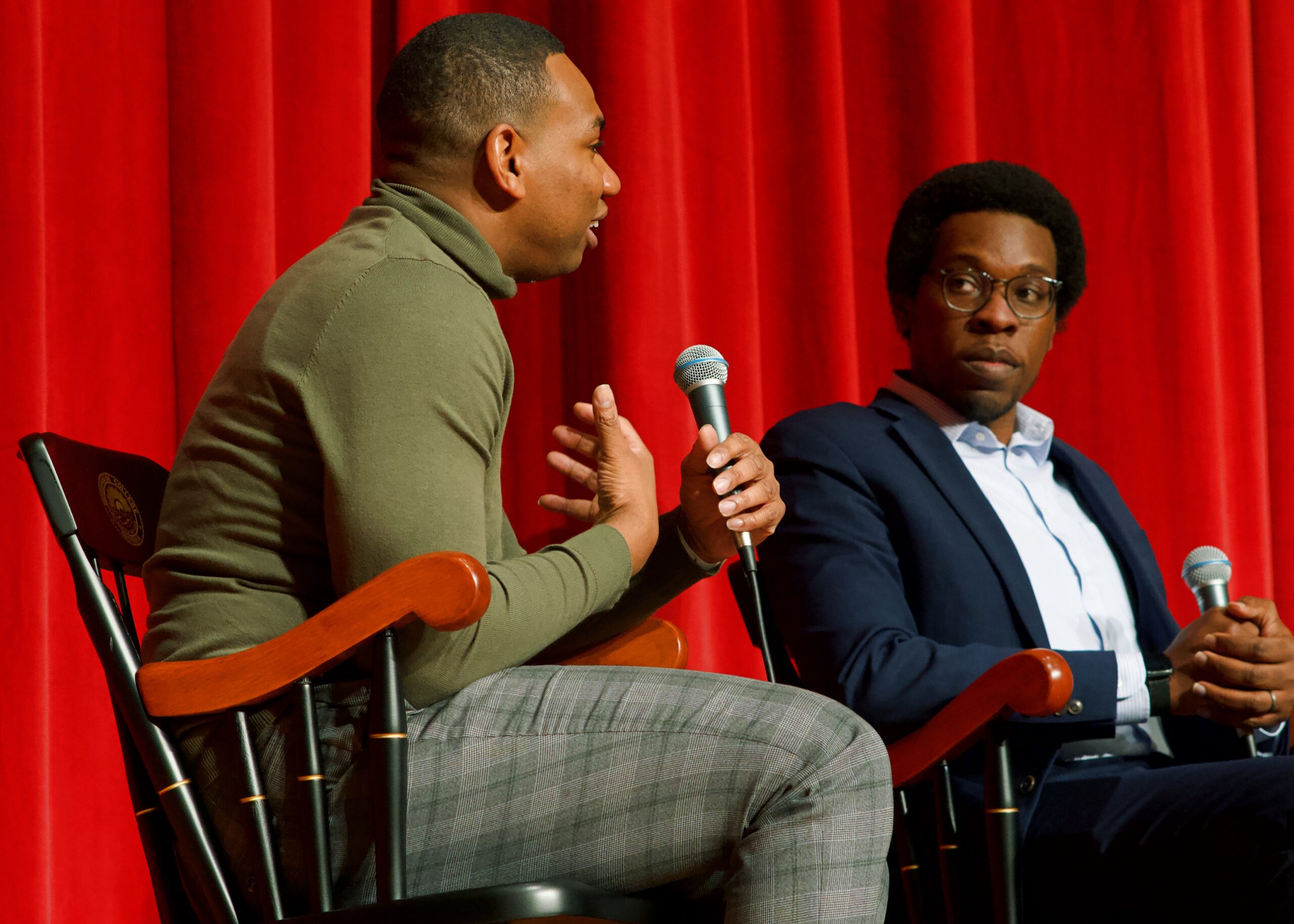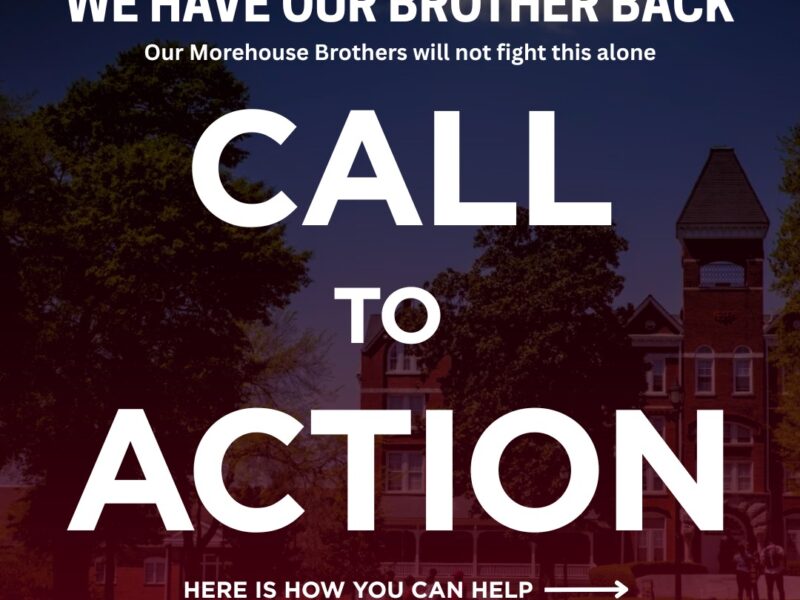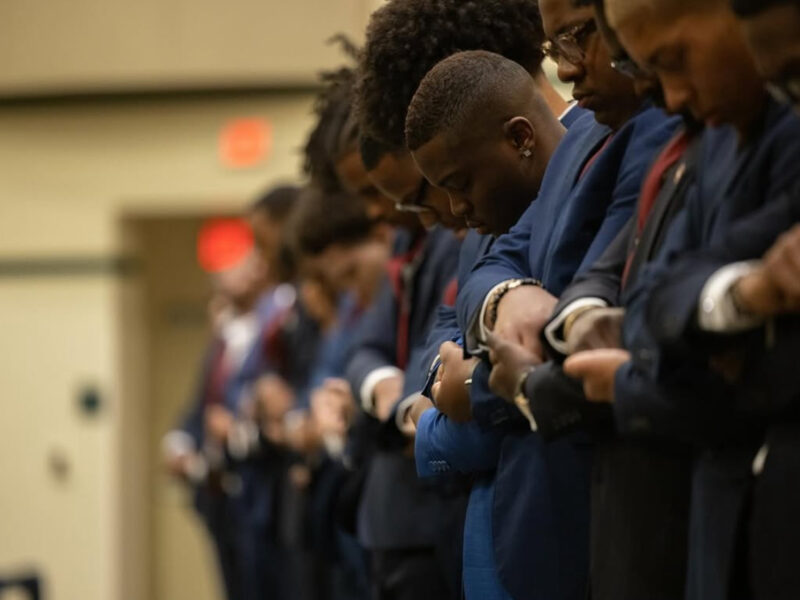From Martyr to Man: Telling the Complete Story of George Floyd

Photo by Kollin Washington
By: Colin Royal and Bennie Williams
When the majority of people think about George Floyd, they tend to recount the tragic events of May 25, 2020, when Floyd was murdered by officer Derek Chauvin. However, co-authors Robert Samuels and Toluse Olorunnipa of “His Name is George Floyd” sought to change this narrative.
The book discussion, sponsored by the Mellon Foundation, took place in the Martin Luther King, Jr. International Chapel. It was moderated by Ron Thomas, Director of Journalism in Sports, Culture and Social Justice Program at Morehouse College. The first 200 people in attendance received free copies of the book.
Robert Samuels has been a national political enterprise reporter for the Washington Post. His work has focused on politics and its impact on American identity. In March, Samuels will be joining The New Yorker as a staff writer.
Toluse Olorunnipa is the White House Bureau Chief for the Washington Post. His work has appeared in several outlets which include The Chicago Tribune, Bloomberg News, and the Miami Herald.
Both men have a substantial background in the field of journalism, and this experience allowed them the opportunity to tell Floyd’s story.
“We wanted to restore his humanity. He was so much more than those nine minutes and 29 seconds,” Olorunnipa said.
Floyd was a man of immense ambition, compassion, and love. He was more than the tragic figure that the media had made him out to be, and they wanted to show that.
Samuels and Olorunnipa succeeded in completely shifting the perspective about Floyd through the book’s unique introduction, which began with three words: “I love you.” They had decided to start the book in this manner in order to show that Floyd was not a one dimensional person.
Floyd was a dreamer, a lover, a mama’s boy and a beacon of peace. There were times in his life where he wanted to be a Supreme Court Justice, an owner of a prison style restaurant that exclusively hired convicts and a plethora of other occupations.
Samuels and Olorunnipa explored his personal thoughts through journal entries, the poetry he wrote and even some old school assignments that he did; however, the most impactful look into the true nature of Floyd was the stories from those that were close to him.
Once you become a hashtag, it is easier for you to be stripped of your humanity,” Olorunnipa said. vWe wanted to show he was someone with a family, who wanted to spread love. We wanted to contextualize his life.”
Samuels talked about how Floyd was raised in a tight knit housing project.
“Interviewees didn’t know that there were two people fact checking, and, oftentimes, they come out to the word or almost to the word of what George Floyd,” Samuels said.
The people that knew Floyd were not only honest about who he was, but they painted a picture that vastly contradicted the lewd and harsh stereotypes that have been attributed to him. They described Floyd as a big teddy bear. A man that was quick to show emotion and slow to show anger.
Samuels and Olorunnipa provided a complete insight into Floyd; however, it almost did not come to light.
“I initially didn’t want to cover the protests,” Samuels said.
“I did not want to be a part of the immediate reporting,” added Olorunnipa.
Both men saw so much in 2020, and the pain of seeing another Black life taken was almost too much. The co-authors eventually decided that they had the responsibility to do right by Floyd.
“This was our way of helping to right some of the wrongs we saw in the world,” Samuels said.
From that point on, everything fell into place. They interviewed over 600 people, toured the various communities that Floyd was a part of and built relationships with the people he left behind.
“Information is the weapon people can use to arm themselves against society,” said Olorunnipa.
Samuels and Olorunnipa gave us much more than a story. They not only showed the intricacies of a man who had been defined by his lowest moment, but they also provided people with the tools to combat a society rife with injustice.
Copy Edited by Miles Johnson






